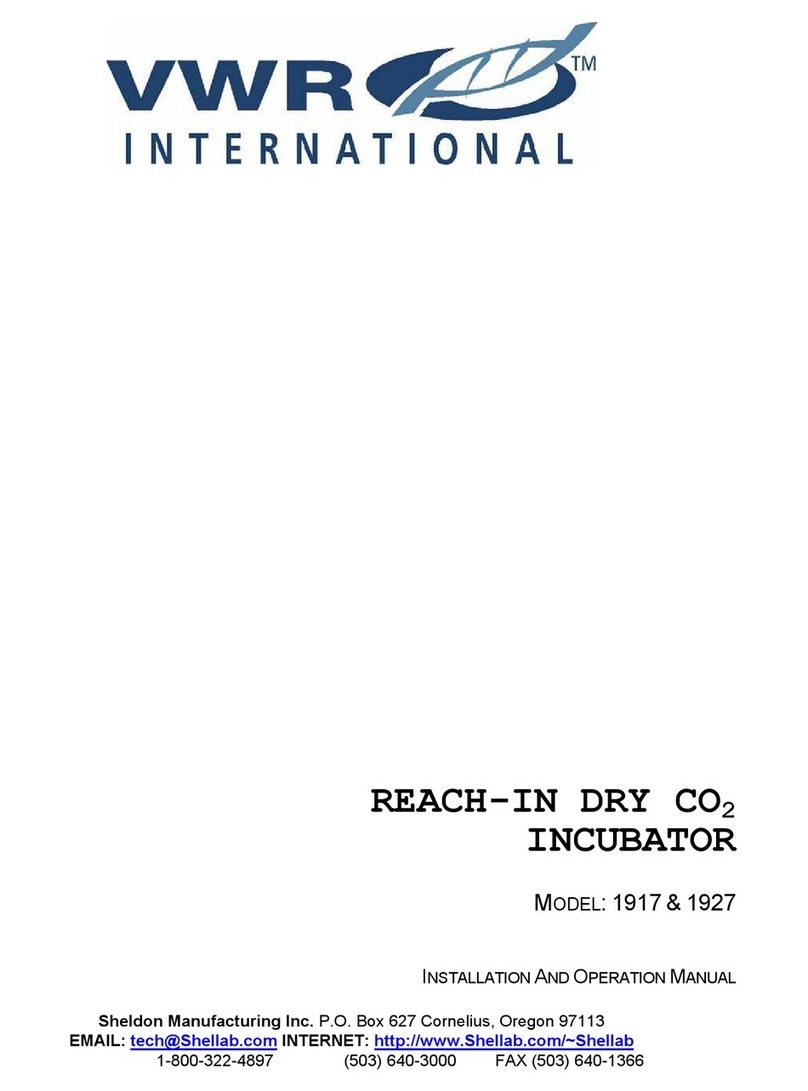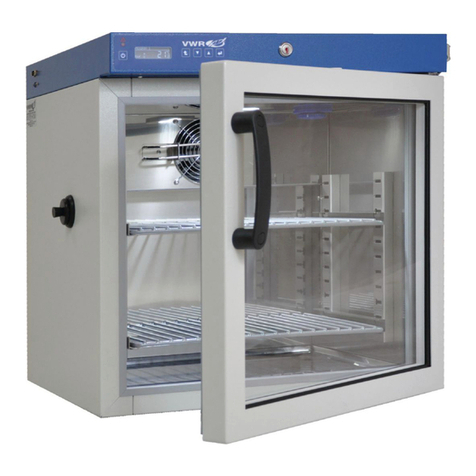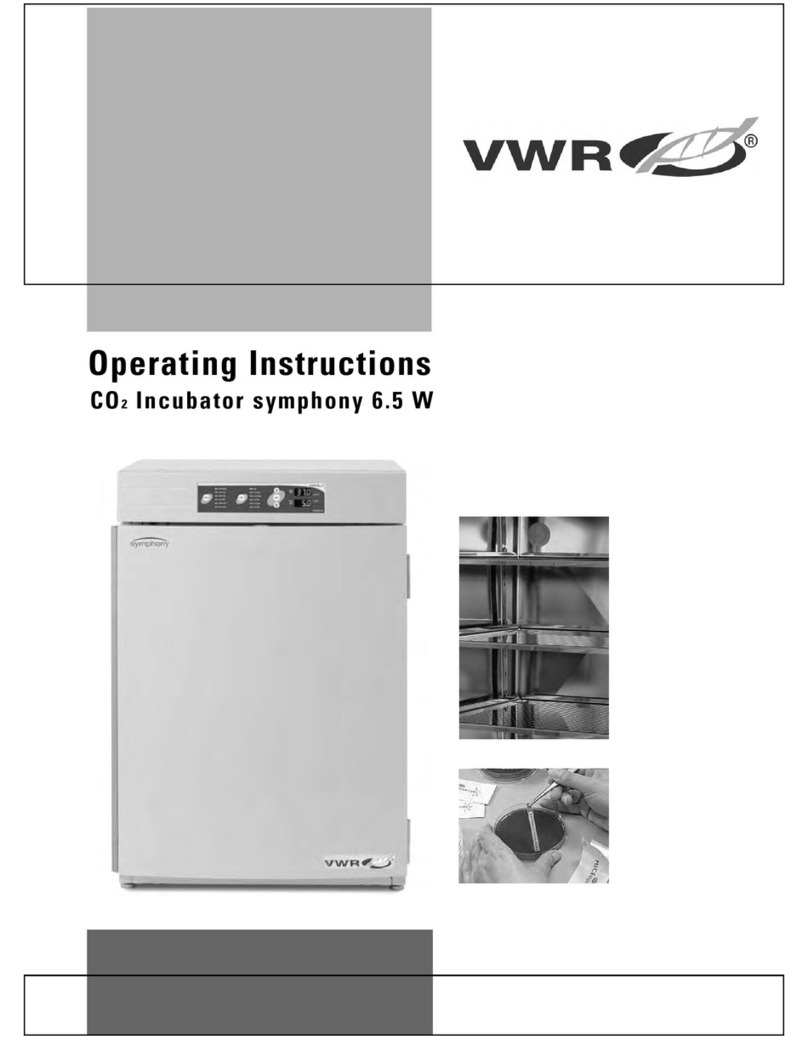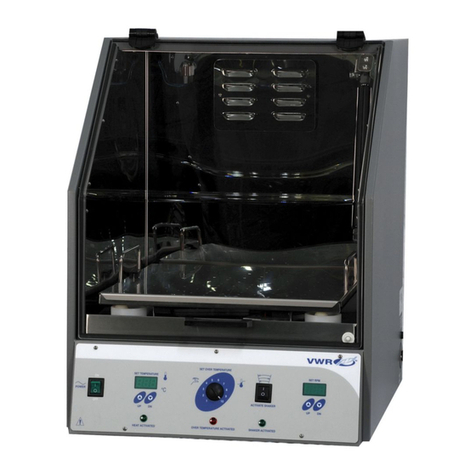
5
INSTALLATION
Local city, county, or other ordinances may govern the use of this equipment. If you have
any questions about local requirements, please contact the appropriate local agency.
Installation may be performed by the end user.
Under normal circumstances this unit is intended for use indoors, at room temperatures
between 5°and 40°C , at no greater than 80% Relative Humidity (at 25°C) and with a
supply voltage that does not vary by more than 10%. Customer services should be
contacted for operating conditions outside of these limits.
CAUTION: Make sure that the incubator is located in its intended position and level
before filling the water jacket.
3.1 Power Source: The unit power requirements are listed on the data plate. PLUG
THE UNIT INTO A PROPERLY GROUNDED AND RATED RECEPTACLE OF
THE CORRECT STYLE. A separate circuit is recommended for this unit to prevent
loss of product due to overloading or circuit failures caused by other equipment.
The power supply must be properly grounded (earthed) and correctly sized to match
the unit nameplate rating. The supply voltage must match the nameplate
voltage within +/- 10%. The US market units are designed for 110 volts @ 60 Hz,
5 Amps. The EU market units are designed for 220 volts @ 50 Hz, 3.5 Amps. If
supplied with a detachable cord set, plug the female end into the inlet on the unit
and the male plug into the supply. Assure that units requiring fuses have them
installed. This fuse may be at the inlet or a part of the cord set male plug. The unit
must be located to easily allow for it to be unplugged or disconnected.
3.2 Location: When selecting a site for the unit, consider conditions which may affect
performance, such as heat from steam radiators, ovens, autoclaves, etc. Avoid
direct sun, fast-moving air currents, heating/cooling ducts, and high-traffic areas. To
ensure air circulation around the unit, allow a minimum of 10cm between the
incubator and walls or partitions which might obstruct free airflow.
3.3 Lifting/Handling: These units are heavy and care should be taken to use
appropriate lifting devices that are sufficiently rated for these loads. Units should
only be lifted from their bottom surfaces. Doors, handles and knobs are not
adequate for lifting or transport. All moving parts, such as shelves and trays should
be removed and doors need to be positively locked in the closed position during
transfer to prevent shifting and damage.
Sectio
3
Artisan Technology Group - Quality Instrumentation ... Guaranteed | (888) 88-SOURCE | www.artisantg.com




































